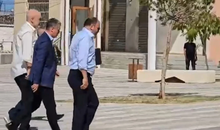
 Flash News
Flash News
What is behind the deaths in this year's Hajj pilgrimage in Saudi Arabia?

Hundreds of people are thought to have died during the Hajj pilgrimage in Saudi Arabia - most of them due to extreme heat as temperatures soared above 51 degrees Celsius.
The AFP news agency quoted an Arab diplomat as saying that 658 Egyptians had died. Indonesia said more than 200 of its nationals had died. India said 98 people were known to have died.
Pakistan, Malaysia, Jordan, Iran, Senegal, Sudan and Iraq's autonomous Kurdistan region have also confirmed deaths.
The US believes a number of Americans have died, the Wall Street Journal reported. Friends and relatives have searched for the missing in hospitals and posted messages on the Internet.
On Friday, Jordan said it had arrested several travel agents who facilitated unofficial travel for Muslim pilgrims to Mecca.
Egypt is conducting a similar investigation. Later on Friday, Tunisian President Kais Saied fired the minister of religious affairs after local media reported that 49 Tunisians had died. A statement said most of those who died were unregistered pilgrims.
Hajj is the annual pilgrimage of Muslims to the holy city of Mecca. All Muslims who are financially and physically able should perform the pilgrimage at least once in their lifetime. About 1.8 million people took part this year, Saudi Arabia says.
More than half of those who died were unregistered pilgrims and joined the Haj through irregular channels, leaving them unable to access cooling facilities such as air-conditioned tents and buses, AFP reports.
Saudi Arabia has increased Hajj security measures in recent years, but it still faces criticism for not doing enough, particularly for unregistered pilgrims. It has not yet commented on the deaths.
Here are some of the factors that may have caused the deaths.
Extreme heat
Unprecedented heat waves in Saudi Arabia are believed to be a major factor behind the high death toll. Despite warnings from the Saudi Ministry of Health to avoid heat exposure and stay hydrated, many pilgrims fell victim to the heat and heat stroke.
"It was only by the grace of God that I survived because it was extremely hot," said Aisha Idris, a Nigerian pilgrim, speaking to the BBC World Service's Newsday.
"I had to use an umbrella and constantly wash myself with Zamzem (holy water)," she said. Another pilgrim, Naimi, reportedly died of heatstroke, leaving her family searching for answers.
"Komunikimi me nënën time u ndërpre papritur. Kaluam ditë duke kërkuar, vetëm për të mësuar se ajo kishte vdekur gjatë Haxhit," tha djali i saj për BBC News Arabic, duke shtuar se ata do ta respektonin dëshirën e saj për t'u varrosur në Mekë.
Problemet e mbipopullimit
Sipas disa llogarive, keqmenaxhimi nga autoritetet saudite përkeqësoi kushtet ekstreme, duke çuar në një krizë në shumë zona të caktuara për pelegrinët.
Ata thonë se akomodimi dhe objektet ishin menaxhuar keq, me tenda të mbipopulluara pa objekte adekuate ftohjeje dhe sanitare.
Amina (jo emri i saj i vërtetë), një 38-vjeçare nga Islamabadi, thotë: "Nuk kishte kondicioner në çadrat tona në vapën e Mekës. Ftohësit që ishin instaluar nuk kishin ujë shumicën e kohës.
Transporti
Pelegrinët shpesh detyroheshin të ecnin në distanca të gjata në vapë , duke fajësuar disa pengesa në rrugë dhe menaxhim të dobët.
Muhammad Acha, një organizator i Haxhit për një grup privat tha se gjatë verës, një pelegrini tipik mund t'i duhet të ecë të paktën 15 kilometra në ditë. Kjo i ekspozon ata ndaj goditjes nga nxehtësia, lodhjes dhe mungesës së ujit të disponueshëm,
"Ky është haxhi im i 18-të dhe në përvojën time, kontrollorët sauditë nuk janë lehtësues. Ata kontrollojnë, por nuk ndihmojnë," tha ai.
"Në vitet e mëparshme, kthesat kthesore për të hyrë në tenda ishin të hapura, por tani të gjitha ato rrugë janë mbyllur. Si rezultat, një pelegrin i zakonshëm, edhe nëse qëndron në një tendë të kategorisë A në Zonën I, duhet të ecë 2.5 kilometra në vapën e verës për të arritur në çadrën e tyre”, shpjegon ai.
"Nëse ka një emergjencë në këtë rrugë, askush nuk do t'ju arrijë për 30 minuta. Nuk ka rregullime për të shpëtuar jetë, as nuk ka pika uji përgjatë këtyre shtigjeve," shton Acha.
Undocumented Pilgrim
To perform the Hajj, a pilgrim must apply for a special Hajj visa.
But some individuals try to go on the five-day pilgrimage without proper documentation, despite efforts by Saudi officials to crack down.
Pilgrims without proper documentation often avoid the authorities, even when they need help.
This issue of "unofficial hajj" is believed to contribute to the excess deaths, and authorities have blamed them for some of the overcrowding in the tents.
"We suspect that those using non-Hajj visas have infiltrated Hajj areas," says Mustolih Siradj, chairman of Indonesia's National Hajj and Umrah Commission (Komnas Haji).
Saad Al-Qurashi, an adviser to the National Committee for Hajj and Umrah, told the BBC: "Anyone who does not have a visa for Hajj will not be tolerated and should return to [their] country."
He notes that irregular pilgrims are identified using Nusuk cards, which are issued to official pilgrims and contain a bar code for entering holy sites.
Elderly, Infirm or Sick Pilgrims
One reason that there may be many deaths each year in the Hajj is that many pilgrims go towards the end of their lives, having saved for a lifetime.
Many Muslims also go with the hope that if they die, it will be during the Hajj - as it is considered a blessing to die and be buried in the holy city.
What happens if someone dies while performing Hajj?
When a pilgrim dies while performing the Hajj, the death is reported to the Hajj Mission. They use wristbands or neck IDs to confirm identity. Then, they get a doctor's certificate and Saudi Arabia issues a death certificate.
Funeral prayers take place in important mosques such as Masjid al-Haram in Mecca or the Prophet's Mosque in Medina, depending on this. The body is washed, wrapped and moved to a freezer provided by the Saudi government, which covers all expenses.
Burials are simple, unmarked, sometimes with many bodies in one place. The cemetery book lists who is buried where, so families can visit the graves if they want.
The Saudi government, with the help of various groups and the Red Crescent, says it ensures "dignified and respectful burial processes". BBC
Latest news



What does Zelenskyy have more than Zegjineja?
2025-07-05 18:45:26

Fiscal peace, but at a cost
2025-07-05 18:00:10
'Bankers' tax evasion, Chinese CEO and former director jailed
2025-07-05 17:39:21
Kyle Walker joins English club on two-year deal
2025-07-05 17:20:24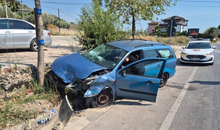
Two cars collide on the Saranda-Delvina axis, 4 injured
2025-07-05 17:05:29
Touching gesture! Liverpool will pay Jota's family's salary until 2027
2025-07-05 16:45:18
The zodiac signs that cheat most often
2025-07-05 16:25:53

"I asked for the dismissals", Dredha tries to soften Rama's 'blow' in Vlora
2025-07-05 15:48:49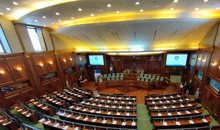
Bomb threat in Parliament, prosecutor: It was a lie
2025-07-05 15:22:28

Bardhi: The recount revealed how greedy Zeqine Balluku is in stealing
2025-07-05 14:44:29
Knife wound on the secondary road Tirana-Durrës, perpetrator sought
2025-07-05 14:37:54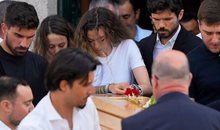
Tears and pain, Diogo Jota is escorted to his final home
2025-07-05 14:21:34
Success starts with yourself! Simple ways to invest in personal development
2025-07-05 13:58:50
Unlicensed firearms found in apartment, 50-year-old arrested in Lushnje
2025-07-05 13:43:11

Tirana Court remands Skerdi Sina to prison
2025-07-05 12:59:34
Cocaine laboratory in Greece, here are the Albanians arrested and wanted
2025-07-05 12:40:16
Directed Justice/Vangjeli: SPAK does not investigate any scandal involving Rama
2025-07-05 12:22:03
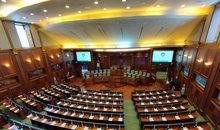
Bomb alert, Police remove MPs and media from Kosovo Parliament building
2025-07-05 11:48:16
"The will of the people" and the irony of ordered resignations
2025-07-05 11:32:05
Summer drowning risk: How to enjoy the water without risking your life
2025-07-05 11:20:27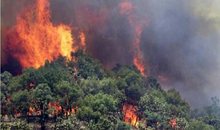
Fire situation in the country, 16 fires reported in 24 hours, 4 still active
2025-07-05 11:07:04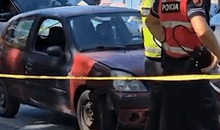
Car hits pedestrian at white lines, injured in serious condition in Vlora
2025-07-05 10:59:58
Mosquito-borne diseases are a growing problem in Europe
2025-07-05 10:44:13



One of Sweden's most dangerous and wanted criminals arrested in Turkey
2025-07-05 09:38:29
Foreign exchange/ How much foreign currencies are bought and sold today
2025-07-05 09:18:38

"Don't be influenced by the opinions of others", today's horoscope
2025-07-05 08:40:50

Morning Post/ In 2 lines: What mattered yesterday in Albania
2025-07-05 08:02:07

Trump says he's ready to raise tariffs to 70% on some countries
2025-07-04 22:35:52
Tre shenjat e zodiakut që do ‘pasurohen’ në Korrik
2025-07-04 22:05:09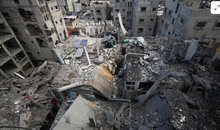
Gaza War: Hamas Accepts US Proposal for 60-Day Ceasefire
2025-07-04 21:50:10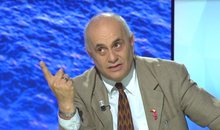
Autocracy in Albania, Fuga: Governance has gotten out of control
2025-07-04 21:40:51
Meta: Agriculture on credit, the new fraud!
2025-07-04 21:26:39
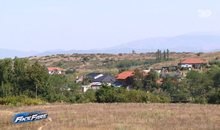



Vote recount in Durrës ends without changes
2025-07-04 20:12:54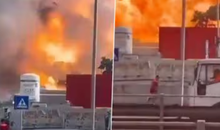
Gas station explodes in Rome, 25 injured (VIDEO)
2025-07-04 20:00:20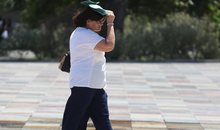

These afternoon habits often sabotage weight loss
2025-07-04 19:39:28
Former Arsenal player Thomas Partey accused of rape
2025-07-04 19:24:21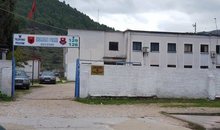
Shepherd disappears without a trace in Delvina
2025-07-04 19:14:31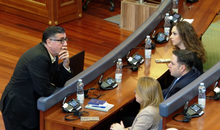

Bardho gave Zegjine's mandate/Braho: Unfair! It violates the electoral system
2025-07-04 19:01:08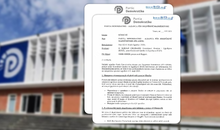
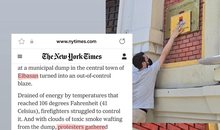

Rapid developments in the Sultanates!
2025-07-04 18:00:06
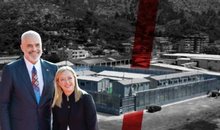


Italy tightens rules for skateboard traffic
2025-07-04 17:20:18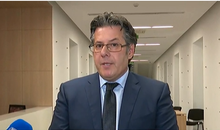
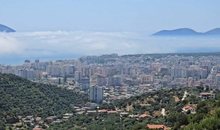
Unusual for the time, dense fog covers the coast of Vlora
2025-07-04 16:48:01

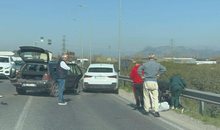
Accident on the Shkodra-Lezhë axis, one dead and 3 injured
2025-07-04 16:14:19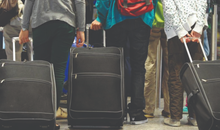
Albania with fewer requests for asylum and Albanian citizenship in 2024
2025-07-04 16:06:57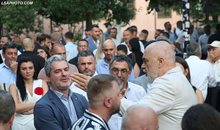

Albania last for quality of life, DP: Technical government is the solution!
2025-07-04 15:42:30
Nico Williams says "No" to Barcelona, signs with Athletic Club until 2035
2025-07-04 15:33:35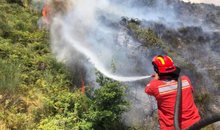
Fires in the country, four fires are still active, what is the situation?
2025-07-04 15:24:20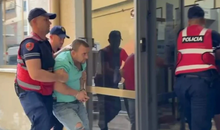

Summer brings big changes for these 4 zodiac signs
2025-07-04 15:00:04
Osmani: MPs need to agree to a secret ballot for the Speaker of Parliament
2025-07-04 14:51:09
Serious accident on the Peqin-Elbasan axis, two injured
2025-07-04 14:37:56
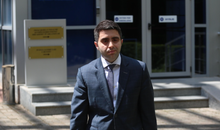
GJKKO leaves in force the security measure for the head of the KPP
2025-07-04 13:58:17
Who will replace Ilir Meta and take over the leadership of the PL?
2025-07-04 13:50:36
Berisha: Dismissal of directors in Vlora, another act of 'scapegoats'
2025-07-04 13:41:46




Librazhd/ In a serious psychological state, the young man consumes pesticides
2025-07-04 13:05:07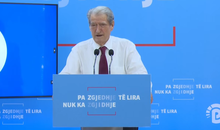


Weapons trafficked from Kosovo to Albania, two arrested, 8 pistols seized
2025-07-04 12:33:28
Konsumimi i tepërt i çokollatës, ja cilat janë dëmet që shkakton në organizëm
2025-07-04 12:23:35
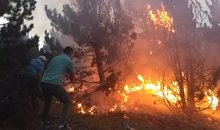
Fires in the country, 21 fires in the last 24 hours, 4 still active
2025-07-04 12:00:19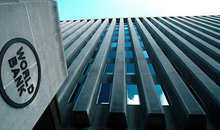
WB calls for debt transparency: Albania to publish details of every loan
2025-07-04 11:50:05
Changes in the State Police, new names expected to lead 5 police stations
2025-07-04 11:40:06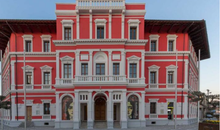

The race for the head of the BKH, the third phase on July 11
2025-07-04 11:20:23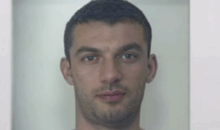

Toxic phrases that show your relationship is in trouble
2025-07-04 11:00:10